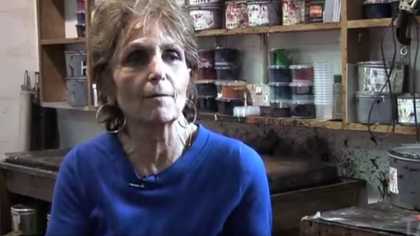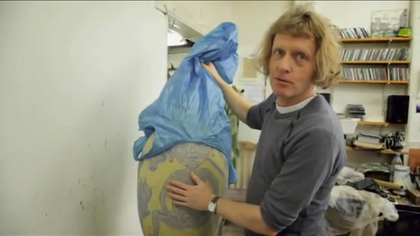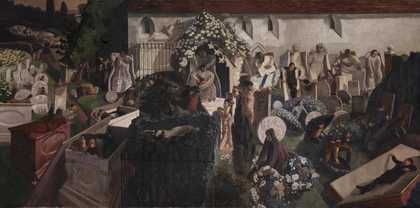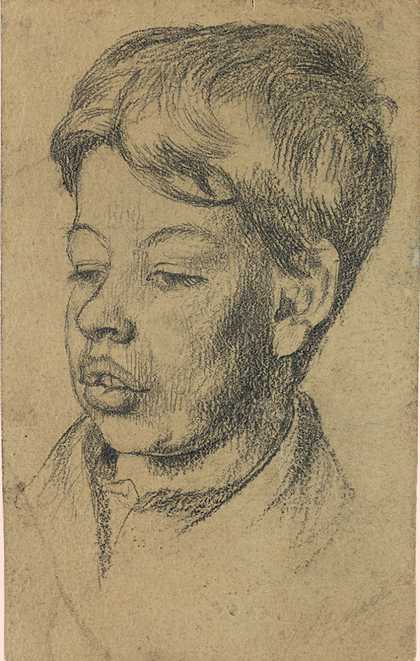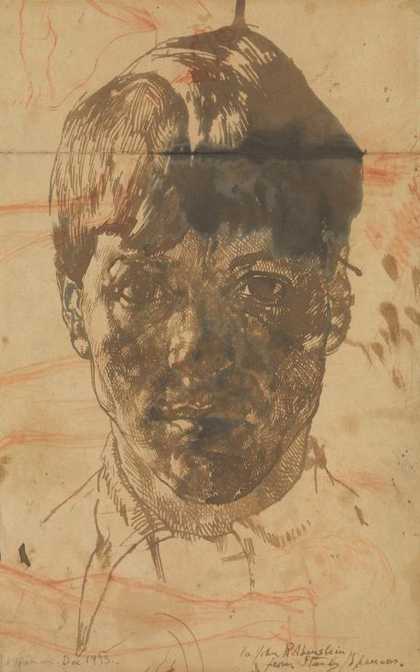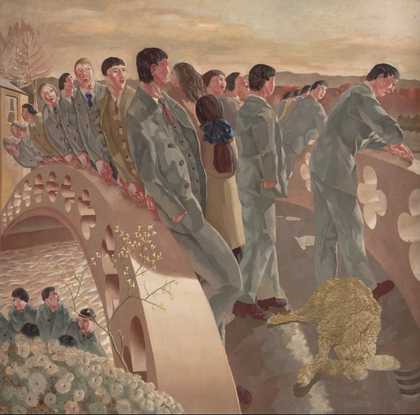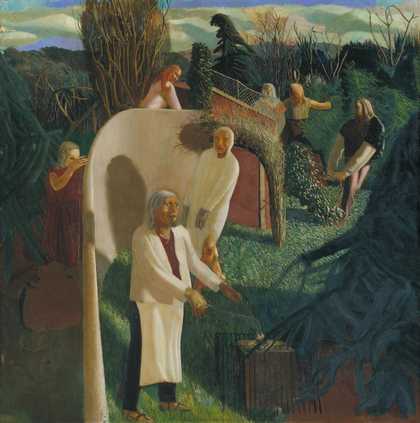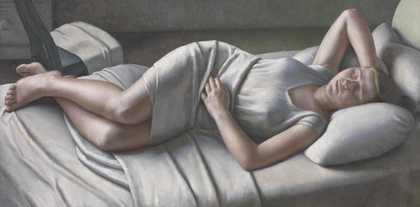Stanley Spencer is best known for his huge paintings that treat British village life in the manner of Renaissance frescoes, such as his masterpiece The Resurrection, Cookham, in which the lives (and deaths) of ordinary folk are tenderly offered up to our gaze.
Author and Spencer fan Sîan Pattendon visited the 2008 Spencer exhibition at Tate Liverpool.
Hello, IŌĆÖm Si├ón Pattenden and IŌĆÖm at Tate Liverpool where there is a Stanley Spencer exhibition, and Stanley is one of my favourite painters: Stanley Spencer was an English painter who operated in the 1920s to 1959 when he died. He was a visionary, someone who just stuck to his own path. He was not influenced by his contemporaries, he painted what he wanted to, and he was prolific. He painted all day and all night if he could. He survived on jam sandwiches in his studio and had barely time for anything else. As a result, we get these epic pictures, where there are lots of people in, influenced by the Renaissance, a lot of it Giotto. He was a big fan of Masaccio. And you can really sense a spirit and a vision and a love in Stanley Spencer which I donŌĆÖt think that you find in a lot of other painters. Some people call it a naivety, and some people would say thereŌĆÖs a lack of cynicism there, which we modern people like ŌĆō but I think if you go and look there and find it, you will see so much of human life and death that there is a depth to it that many other painters do lack. This is The Resurrection, Cookham, by Stanley Spencer, which was finished in 1927. What youŌĆÖve got, basically, is a churchyard and loads of graves. Something that someone else might have done something very Gothic with, and scary, becomes this joyous place, and you have people coming out of the earth quite literally, being reborn again. One of my favourite bits is that Stanley Spencer will always put himself in the picture. HeŌĆÖs over there, I believe, in a sort of tweedy suit with the trousers, and heŌĆÖs looking at what probably is Hilda, his first wife. ItŌĆÖs a fantastic image, and itŌĆÖs very beautiful that ŌĆō also that SpencerŌĆÖs not even facing us, he doesnŌĆÖt want to see us. In the background you have the couples, and very much what Spencer was interested in is the minutiae, and this kind of love of the wife dusting the coat so it didnŌĆÖt have any horrible cat hairs on it or something before they went out, and making sure that the husband was presentable. And then we have the gravestones and people looking at their own gravestones and the inscriptions. And not with any sort of faint horror that you might find nowadays, but this absolute sort of rapture, that here they are back again. This is also a sort of resurrection of StanleyŌĆÖs hopes and dreams. He was married, as I say. He had also survived the First World War, which was quite a feat. And there is something about the joy and discovery and constant discovery that he wants to put in his painting. ItŌĆÖs also done in a wonderful V-shape, if you see, thatŌĆÖs very pleasing to the eye ŌĆō which sort of holds you in and keeps you there. There is also Stanley, very obviously, at the corner here. He said of this tomb, the way that itŌĆÖs broken is like a book, and that itŌĆÖs his favourite place to be, because he loved reading so much ŌĆō as much as he loved writing, as much as he loved painting. ThereŌĆÖs also the women talking to each other. They have love letters that they were going to give to their partners, and thatŌĆÖs coming up, and love letters is something that Stanley wrote all his life. Although itŌĆÖs got lots and lots of figures in it, and lots of stories and lots of narratives, itŌĆÖs not saying ŌĆśthis is a thing about joy, so weŌĆÖre going to have everyone in yellow, and theyŌĆÖre going to be going ŌĆ£Hurray!ŌĆØŌĆÖ ItŌĆÖs something thatŌĆÖs also contemplative. I mean, even Stanley is not looking at the action. HeŌĆÖs contemplating. ItŌĆÖs about everyone working together. I also think that naked person there is Stanley, and I think thatŌĆÖs about the First World War and sort of being stripped of everything and coming back. It could be a soldier coming back and having a look around. But I think as a whole, I think you just donŌĆÖt find painting like this now. You donŌĆÖt walk into a gallery and see these epics. You know, you get the idea that he was guided. He wasnŌĆÖt very happy with this top left corner there, apparently, and went to go and see a Constable exhibition and then came back inspired. But I rather like it, because you donŌĆÖt know whether those people are leaving, or coming in to watch. I think theyŌĆÖre coming in to watch.

